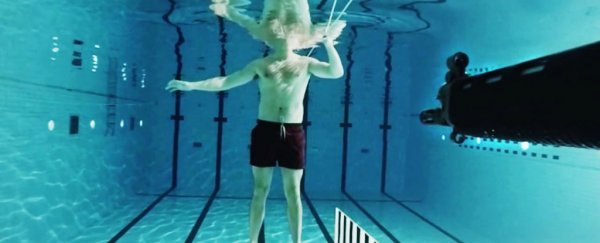
Yesterday we showed you how Norwegian physicist Andreas Wahl plummet off the side of a building in order to demonstrate centripetal force in action. And now he's back with another life-threatening experiment, this time shooting a gun directly at himself underwater, and hoping that fluid resistance will be enough to save him.
If that sounds terrifying, well, it is. And the look on Wahl's face when he doesn't get shot is testament to how risky the whole experiment was. Suffice it to say, this isn't one you should be trying at home, because Wahl had an entire safety team on hand to help him out if he needed it.
So now that we've got that out of the way, let's move on to more important questions, like why the hell doesn't the bullet hit him right in the stomach? That, my friends, is all thanks to resistance, which is higher in water than in air.
What that basically means is that water is a lot denser than air, so it applies more force. And an object trying to move through water will have to overcome that force if it wants to get anywhere.
"It's harder to create movement in water than in air, because water molecules are closer together than air molecules," as Norwegian channel NRK Viten explains over on YouTube. "To show the difference in resistance, physicist Andreas Wahl puts himself in front of a weapon submerged in water and fires it - on himself."
To show exactly what happens, the producers filmed the whole thing in slow motion, and you can clearly see the effect that the water resistance, or drag, is having on the bullet. Instead of slicing through the water as it would air, it slows down a lot, and eventually comes to a stop altogether, before dropping to the pool floor.
If that sounds cool, it's because it is, and it's something that has to be seen to be believed.
But now I bet you're wondering what exactly is going on with those bubbles that form around the travelling bullet, right? And don't worry, because science has an answer for that too.
We'll let Destin from Smarter Every Day explain that one, once again in glorious slow motion. You're welcome:

